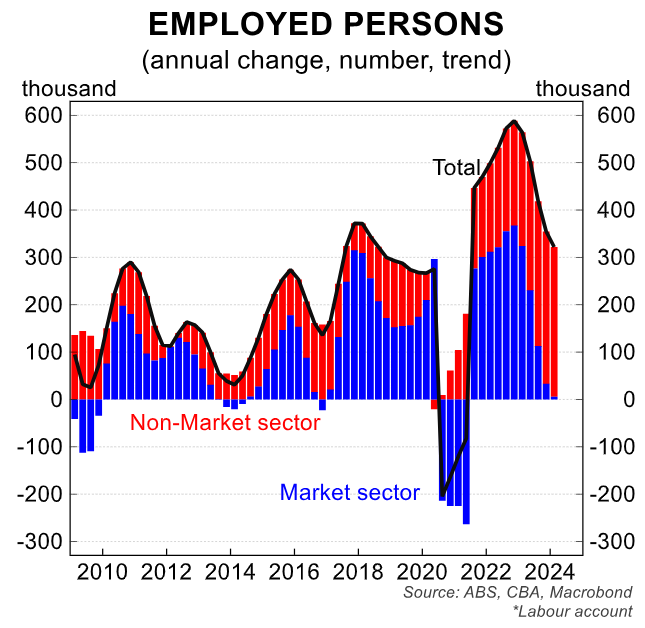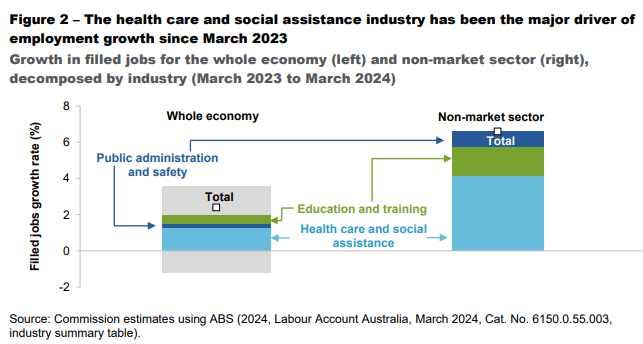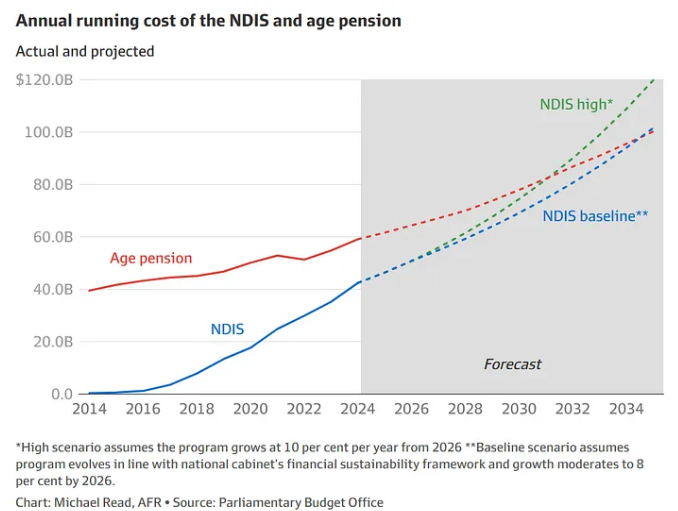Australia’s economy is a low productivity sink hole

- by Admin
- August 19, 2024

The latest quarterly labour market account from the Australian Bureau of Statistics (ABS) showed that virtually all the jobs created in Australia of the prior year were in the non-market (government-aligned) sector:
By contrast, the market sector experienced nearly zero (6,000) jobs growth over the year, and the aggregate number of hours worked actually fell by 27 million.
The following chart from the Productivity Commission (PC) shows why the boom in non-market jobs poses a problem for Australian productivity growth:
Advertisement

According to the PC:
While overall labour productivity growth did not change in the March 2024 quarter, the difference between the market and non-market sector growth rates was large.
Market sector labour productivity increased by 0.5% as a 0.3% decline in gross value added (GVA) was more than offset by a 0.7% fall in hours worked.
In contrast, the non-market sector registered a 1.3% fall in labour productivity as a 1% increase in GVA was outpaced by a 2.4% increase in hours worked.
Over the 12 months to March 2024, productivity decreased in the non-market sector (-2.2%), but increased in the market sector (0.8%).
This coincided with strong growth in hours worked (5.5%) in the non-market sector compared to the market sector (-0.5%).
As you can see in the chart above, the non-market sector has historically exhibited much slower productivity growth than the market sector.
Indeed, labour productivity in the non-market sector is about 3% lower today than it was in 2015, whereas productivity in the market sector is around 9% higher.
Advertisement
The healthcare and social assistance industry has been the main driver of Australia’s jobs growth, driven by the expansion of the NDIS, aged care, and the overall aging of the population:

This poses a problem for Australia’s future productivity, as healthcare and social assistance industry is also expected to drive job growth in the future.
Advertisement
Indeed, estimates from the Parliamentary Budget Office show that the NDIS will balloon in cost from just over $40 billion a year currently to around $100 billion in a decade:

The big question is: where will Australia’s future productivity growth come from if employment growth is dominated by the non-market sector?
Advertisement
The Latest News
-
December 23, 2024Australian tennis star Purcell takes on voluntary provisional suspension for breaking anti-doping rules
-
December 23, 2024‘Back myself and be fearless’: Konstas lives by mantra in first hit | cricket.com.au
-
December 23, 2024Wimbledon champion accepts ban for anti-doping breach just months after winning US Open
-
December 23, 2024Australian tennis star Purcell takes voluntary suspension over anti-doping breach
-
December 23, 2024Max Purcell to miss Australian Open after accepting ban for anti-doping breach





